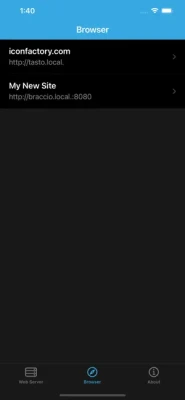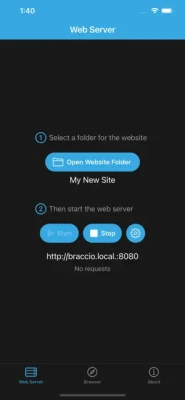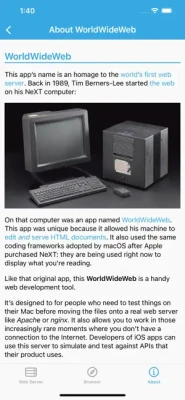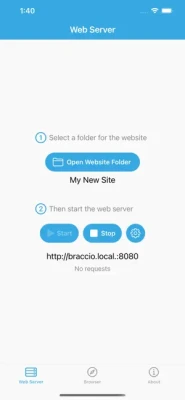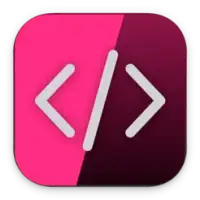Latest Version
2.1.1
December 09, 2024
The Iconfactory
Developer Tools
iOS
3.6 MB
13
Free
Report a Problem
More About WorldWideWeb - Mobile
On a particular computer, there was an application called WorldWideWeb. This app was unique because it allowed the user to edit and serve HTML documents. It also used coding frameworks that were later adopted by Apple after purchasing NeXT. These frameworks are still being used today to display the content that you are currently reading.
Similar to the original app, this WorldWideWeb is a useful tool for web development. It is designed for individuals who need to test their work on their iPad or iPhone before transferring the files to a real web server like Apache or nginx. It also allows for offline work, which can be helpful in situations where there is no internet connection. Additionally, app developers can use this server to simulate and test the APIs that their product uses.
Features:
WorldWideWeb operates differently than traditional web servers used in production today. It has an automatic refresh feature that monitors your site and reloads the browser when changes are made. This eliminates the need for cache busters, as every request receives a new response. The app is also easy to configure, simply select a folder and start working. If you hit a URL that does not exist, the app provides a convenient list of files in that directory.
Bonjour support is also included, which provides automatic DNS for easy access using devices on your local network. This is especially useful for testing purposes. The app also has REST support, allowing you to set default responses as JSON or XML for easy mocking of APIs. It is completely standalone and does not require other tools like Python or Ruby to function.
Security is a top priority, and WorldWideWeb runs completely in a sandbox. This means that it does not have access to any data unless you explicitly allow it. Despite its powerful capabilities, the app has a small memory footprint and minimal CPU overhead. It is also user-friendly and does not require advanced technical knowledge, making it perfect for clients and individuals who are less technically inclined.
On that computer was an app named WorldWideWeb. This app was unique because it allowed his machine to edit and serve HTML documents. The app also used coding frameworks that were adopted by Apple after purchasing NeXT: they are being used right now to display what you’re reading.
Like that original app, this WorldWideWeb is a handy web development tool.
It’s designed for people who need to test things on their iPad or iPhone before moving the files onto a real web server like Apache or nginx. It also allows you to work in those increasingly rare moments where you don’t have a connection to the Internet. App developers can use this server to simulate and test APIs that their product uses.
FEATURES
WorldWideWeb does things differently than today’s production web servers:
• Automatic refresh — Watches your site and reloads browser when there are changes
• No caching — Every request gets a new response, no cache busters needed
• Easy to configure — Pick a folder and go
• Directory listings — A handy list of files whenever you hit a URL that doesn’t exist
• Bonjour support – Automatic DNS for easy access using devices on your local network
• REST support — Set default responses as JSON or XML for easy mocking of APIs
• No external dependencies — Completely standalone and doesn’t need other tools like Python or Ruby
• Built-in security — Runs completely in a sandbox, no access to data unless you allow it
• Powerful and lightweight – A small memory footprint with minimal CPU overhead
• No rocket science — Perfect for clients and other folks who are less technically inclined
Rate the App
User Reviews
Popular Apps











